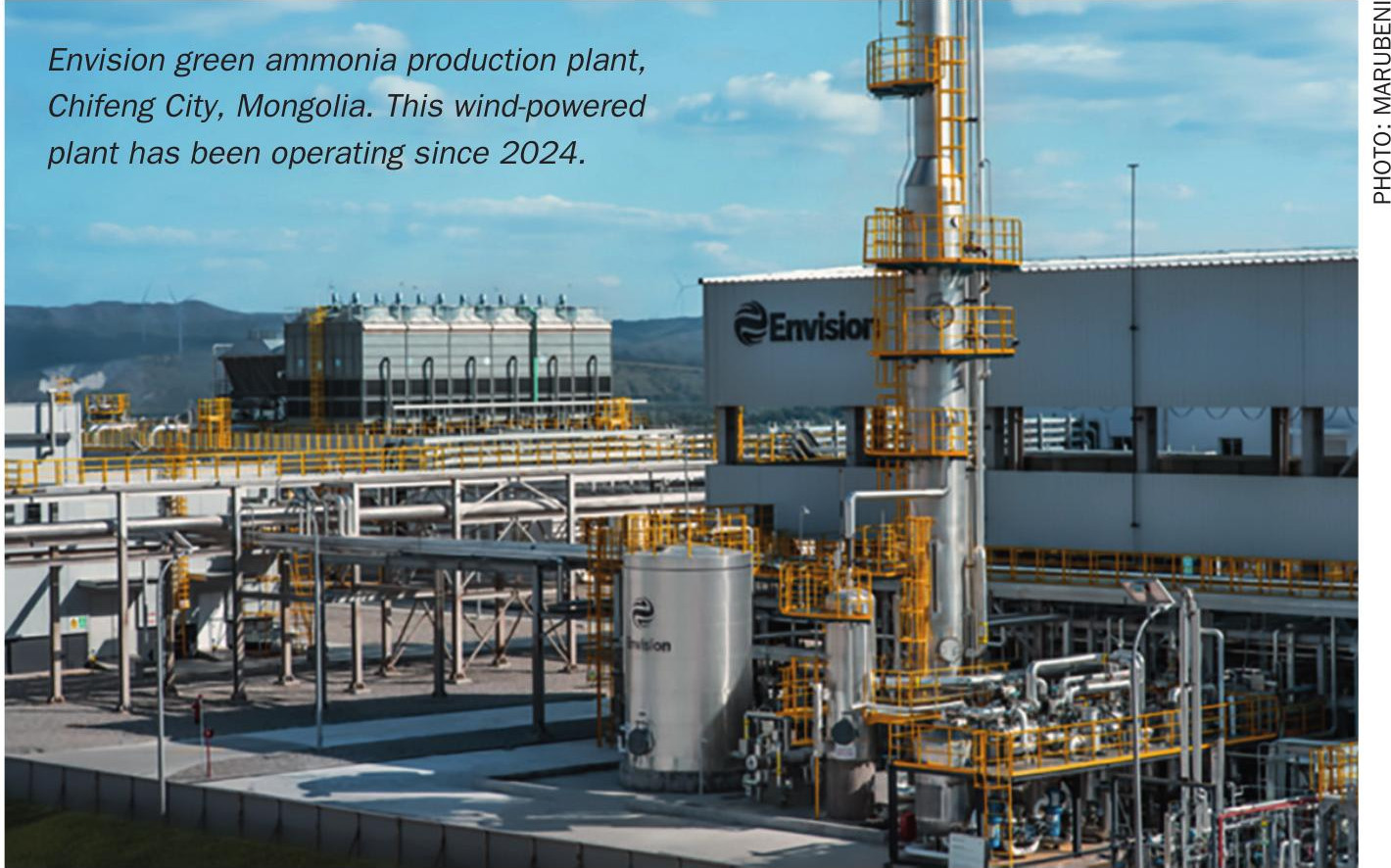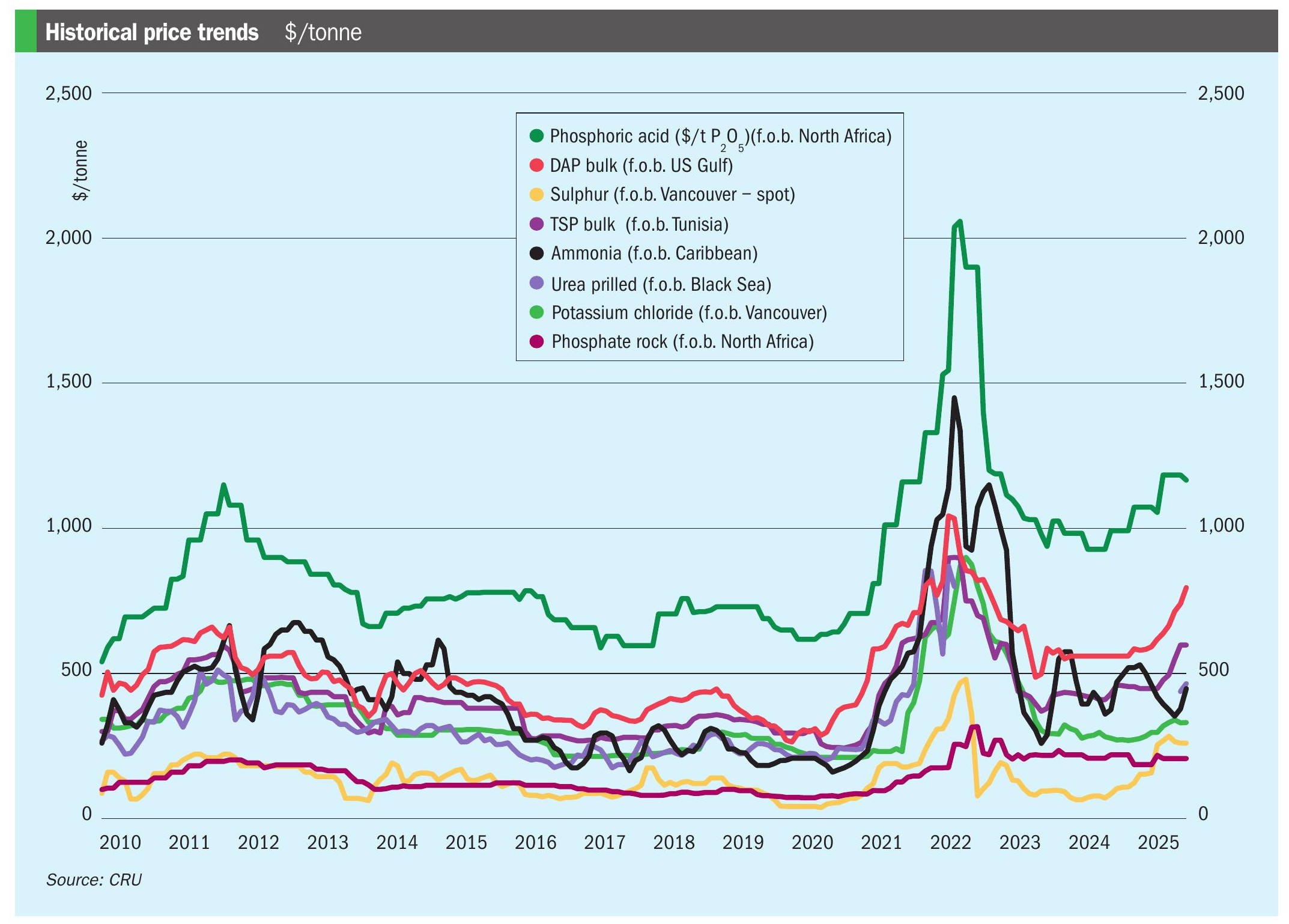Nitrogen+Syngas 376 Mar-Apr 2022

31 March 2022
Price Trends
Price Trends
Market Insight courtesy of Argus Media
NITROGEN
The removal of 200,000 tonnes/month of ammonia from the Black Sea has exposed the market to even further volatility, and several key buy regions are likely to be left short of ammonia in April. Large buyers made moves at the beginning of March to secure March volumes but most market participants are locked in negotiations for any available spot cargoes.
Moroccan, Turkish, Tunisian and Indian buyers are some of the first at risk from shortages, with Pivdenny suppliers unable to cover shipments and ToAz declaring force majeure on contracts. Some are looking to Middle East producers to fill the gap, and fob prices are expected to spike higher in the region once negotiations have been finalized. Soaring gas prices are making it difficult for traders to firm up a position, with the European cost of production fluctuating from below $1,000/t at the end of February to over $1,700/t on 2nd March.
Early March market drivers include rising prices for Baltic contracts; Yara settled the Baltic contract price with Russian producers Eurochem and Uralchem at $1,155/t f.o.b., up $40/t for March shipments from Ventspils and Sillamae. Gas and bunker prices have also soared following the outbreak of the Russia-Ukraine conflict, settling at a new high of around $57/MMBtu on 2nd March. Bunker costs also spiked to over $900/t, putting further pressure on ammonia logistics costs. Tampa talks ended without a settlement – Yara and Mosaic failed to reach an agreement for contract shipments to Tampa in March, with both sides remaining too far apart on price. Mosaic bought a spot cargo from Trammo in line with last month’s contract price.
In urea markets, sanctions by Western countries on Russia have severely curtailed the effective supply available to most buyers in early March and drove nitrogen prices rapidly higher. Importers in Europe, central and south America stepped into the market en masse at the beginning of March looking for urea, while traders competed for tonnage from producers, pushing f.o.b. and c.fr levels up in concert. Egypt, as ever, was a particular standout and granular urea prices added another $145/t in a flurry of trades through early March, finishing at $905/t f.o.b. Asian markets were quieter – Russian supply is less significant there – but still saw double-digit price increases for most locations.
Recent market drivers include Russia sanctions – freight for Russian cargoes is hard to find, and expensive. Many buyers in Europe and the Americas will not buy Russian fertilizer. Financing trade in Russian fertilizers is proving challenging. EU natural gas prices have soared to record highs, likely to drive nitrate prices up or EU producers to shut down. On freight rates, soaring crude oil prices and resurgent demand have pushed levels to fresh highs.

END OF MONTH SPOT PRICESEND OF MONTH SPOT PRICES
natural gas

ammonia

urea

diammonium phosphate







